17 Popular Free & Paid Mail Transfer Agents
MTA (mail transfer agent)
A Mail Transfer Agent (MTA) is a software application or program responsible for the sending, receiving, and routing of email messages between mail servers. It acts as the intermediary in the email delivery process, facilitating the transmission of emails across networks and ensuring their successful delivery to the intended recipients.
In simple words, MTA works behind the scenes, handling the technical aspects of email transmission. When a user sends an email, the MTA on their email client or mail server takes charge of the message, packaging it into the appropriate format and addressing it to the recipient’s mail server. The MTA then transfers the email through the internet or local network, passing it from server to server until it reaches the destination MTA.
MTAs are installed on a mail server and email clients such as Mozilla Thunderbird, Evolution, Microsoft’s Outlook, and Apple Mail are installed user computer.
Which essentially means MTA doesn’t come with GUI all the time. But wouldn’t it be nice to have MTA with an inbuilt GUI or the MTA which comes with integrated email clients to view emails at the least? Well, here are the 10 software to make your own SMTP server with GUI.
What’s the process of sending an email?

Mail servers can be divided into two categories:
Mail servers can be divided into two categories based on their functionality and purpose:
1. Outgoing Mail Servers (SMTP Servers):
- Outgoing mail servers, also known as Simple Mail Transfer Protocol (SMTP) servers, are responsible for sending emails from the sender’s mail client or application to the recipient’s mail server.
- These servers handle the delivery process by establishing a connection with the recipient’s mail server, transmitting the email, and ensuring its successful delivery.
- Outgoing mail servers typically require authentication to prevent unauthorized use and implement security measures to prevent spam or abuse.
2. Incoming Mail Servers (POP3/IMAP Servers):
- Incoming mail servers also referred to as Post Office Protocol (POP3) or Internet Message Access Protocol (IMAP) servers, are responsible for receiving and storing incoming emails.
- When a recipient’s mail client or application checks for new messages, it connects to the incoming mail server to retrieve emails from the recipient’s mailbox.
- POP3 servers download emails to the recipient’s device, usually removing them from the server, while IMAP servers synchronize emails between the server and multiple devices, allowing access to emails from different devices.
- Incoming mail servers often provide features like message filtering, folder organization, and search capabilities to help users manage their incoming emails efficiently.
Both outgoing and incoming mail servers play crucial roles in the email communication process. Outgoing servers ensure the reliable delivery of emails to recipients, while incoming servers enable users to access and manage their received messages. These servers work together to facilitate the smooth exchange of emails between senders and recipients across the internet.
Does MTA impact email deliverability?
Several factors related to the MTA can influence email deliverability:
- IP Reputation: If the IP address has been flagged for sending spam or engaging in malicious activities, it may be blocked or filtered by recipient mail servers.
- Authentication: MTAs often use authentication mechanisms like SPF, DKIM, and DMARC to verify the authenticity and integrity of the email.
- Compliance with Standards and Best Practices: Compliance helps ensure that emails are properly formatted, and the MTA behaves in a manner that is accepted by other mail servers.
- Bounce Management: MTAs handle bounce messages, which are notifications sent by recipient mail servers to inform the sender that an email couldn’t be delivered.
- Monitoring and Reputation Management: It’s crucial to monitor the MTA’s IP reputation, deliverability metrics, and feedback loops to identify any potential issues promptly.
And, we recommend reading our comprehensive article on “Avoid Email Delivery Pitfalls: Blacklisted Words Unveiled.”
Additionally, if you are using PowerMTA as your Mail Transfer Agent (MTA), you may be interested in knowing how many emails it can send to popular email providers such as Gmail, Outlook, and more. Our article “How many emails PowerMTA can send to Gmail, Outlook & more?” provides valuable information and tips to optimize email deliverability when using PowerMTA.
Furthermore, if you’re encountering email deliverability issues with Gmail, one of the most popular email providers, our article “How to solve email deliverability issues with Gmail?” offers valuable insights and actionable steps to overcome common obstacles and improve your emails’ chances of landing in Gmail users’ inboxes.
Lastly, if you’re looking to improve email deliverability to Yahoo Mail users, our article “How to solve email deliverability issues with Yahoo?” provides practical tips and recommendations to address common deliverability challenges and ensure your emails reach Yahoo Mail recipients successfully.
Main functions of a MTA
The primary functions of an MTA include:
- Message Transfer: The Mail Transfer Agent (MTA) is responsible for the reliable and secure transfer of email messages between mail servers. It uses standard protocols, such as SMTP (Simple Mail Transfer Protocol), to establish connections, authenticate, and transmit email data.
- Routing: The MTA determines the most efficient route for delivering the email by analyzing the destination domain and consulting DNS (Domain Name System) records. It identifies the recipient’s mail server and forwards the email accordingly.
- Queue Management: The MTA maintains a queue of outgoing email messages, ensuring that they are processed in the correct order and retrying delivery if initial attempts fail. It handles error handling, such as temporary delivery failures, and manages retries or notifications.
- Security and Policy Enforcement: The MTA applies various security measures, such as spam filtering, virus scanning, and authentication checks, to protect against unwanted or malicious emails. It may also enforce email policies, such as size restrictions or sender/recipient restrictions.
Let’s now see the list of different types of mail servers so you can choose the best among them.
17 Popular Mail Transfer Agent
1. Sendmail

Now, known as Proofpoint, is one of the oldest and most popular MTA on the Linux server platforms that use TCP or IP networks following SMTP protocols to transfer and receive messages. Installed on an email server, it only sends email.
One of the key features of Sendmail is its flexibility and configurability. It allows administrators to customize various aspects of email handling, such as routing rules, security measures, and spam filtering. Sendmail also supports various authentication mechanisms, including SMTP AUTH, to ensure secure communication between mail servers.
Features of Sendmail
- Requires minimum server resources to run the software.
- Allows creating own mailing lists.
- Sendmail is a highly portable solution
- Flexible and easy to use.
- Supports UNIX System V mail and Internet mail.
2. Postfix

Postfix is a free, open-source, and cross-platform server initially designed as an alternative to Sendmail MTA.
It offers simple administration, a secure operation mechanism, easy configuration, and flexibility in working. Also, it is fast in performance and compatible with Linux machines, Mac OSX, and other Unix-like operating systems.
One notable feature of Postfix is its security focus. It implements various security measures, such as enforcing strict email message validation and providing options for spam and virus filtering. Additionally, Postfix supports encryption protocols like Transport Layer Security (TLS) to protect the confidentiality and integrity of email communication.
Here are the main advantages you can expect to find when you start using Postfix:
- Includes highly-detailed documentation
- Security was clearly a priority in Postfix’s design
- Postfix offers impressive compatibility with Sendmail
- High queuing operation is fundamental to Postfix’s functionality
3. Exim

Exim (“Email eXchange IMproved,”) is a feature-rich mail server used on many Unix-like operating systems such as Linux and BSD. It is a widely-used Mail Transfer Agent (MTA) that facilitates the routing and delivery of email messages and also provides efficient cross-platform support.
It features three different log mechanisms for preventing email spamming, namely the main log, panic log, and reject log. They come with pre-built support for a wide range of database management systems such as MySQL, PostgreSQL, SQLite, Oracle DB, and Redis.
Advantages:
- Compatible with Sendmail
- Large, highly supportive community
- Support for cPanel
- Nice scalability
- Significantly flexible configuration (as well as declaring variables, Exim allows you to create an email processing script due to having something akin to a scripting language)
4. Qmail

Qmail is a public domain software and an excellent option for people searching for open source mail server software. It is a widely used mail transfer agent that was initially developed to be an alternative for the Sendmail program. Qmail supports industry-standard protocols such as SMTP for message transfer and POP3 or IMAP for message retrieval.
It offers features like queue management, spam filtering, and robust error handling to ensure smooth email operation. Qmail is available on a plethora of platforms, including Linux, Solaris, Mac OSX, and BSD.
Features of Qmail:
- A tight focus on security
- High performance
- Streamlined simplicity
- User-controlled wildcards were introduced via Qmail.
- Qmail is also responsible for the QMTP (Quick Mail Transport Protocol) and QMQP (Quick Mail Queuing Protocol) protocols.
5. Axigen
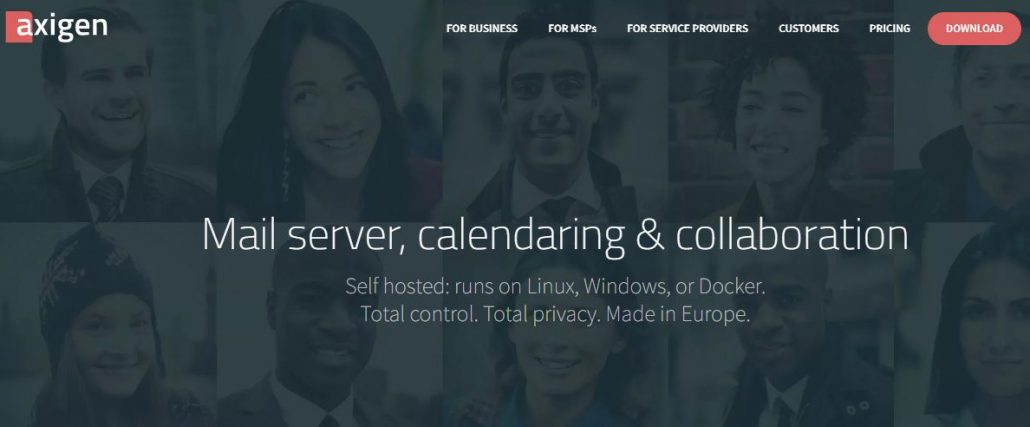
Axigen is another enterprise-class mail server for small and medium businesses. It is a good alternative to Opensource mail servers but the free version is limited to 5 domains, 5 users, and 5 groups.
Features of Axigen
- authentication & Encryption
- Multi-layer Access Control (firewall-like rules)
- SPF & DomainKeys Compliance
- Blacklisting / Whitelisting / Greylisting
- Country Filtering, DNS Checks & Blacklists
- Identity Confirmation System
6. Postal Mail Transfer Agent
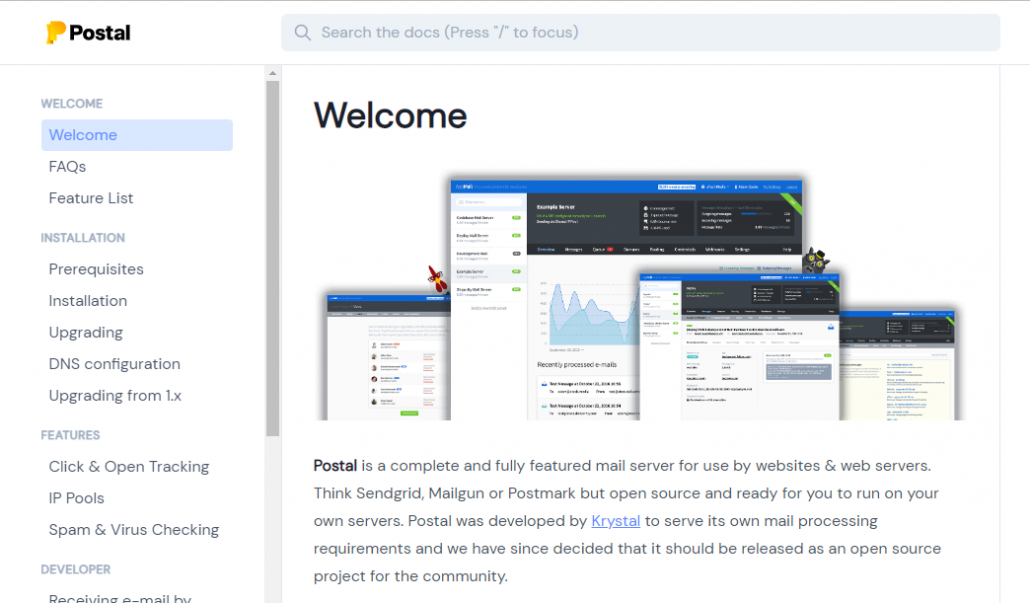
The Postal mail server is easy to use and install open-source software that allows administrators to store and provide real-time analysis to all the send and receive messages. It is one of the best Mail Transfer Agent (MTA) for Linux servers to improve email tracking. For bulk email sending, the software also supports IP pools.
It supports HTTP API for easy integration with other web applications. Another feature that makes it a top choice is spam and antivirus protection.
7. Open SMTPD

It helps deliver messages to local systems or other SMTP servers. Furthermore, it also allows users to forward emails using an HTTP web server. OpenSMTPD is an easy and effective solution compatible with all Unix and Unix-like operating systems, like OpenBSD, Linux, NetBSD, FreeBSD, and OSX.
8. Citadel
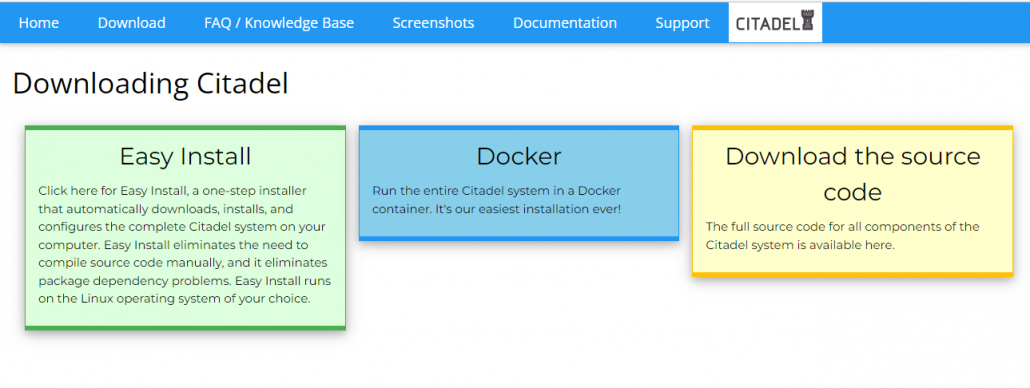
Citadel is another 100% Open source AJAX-powered Groupware Platform. It provides a “Web 2.0” interface along with SMTP, IMAP, POP3, and GroupDAV access to its content. It is written in C and provides its implementations of these server protocols: IMAP, POP3, SMTP, ManageSieve, XMPP, and Citadel.
9. Mutt
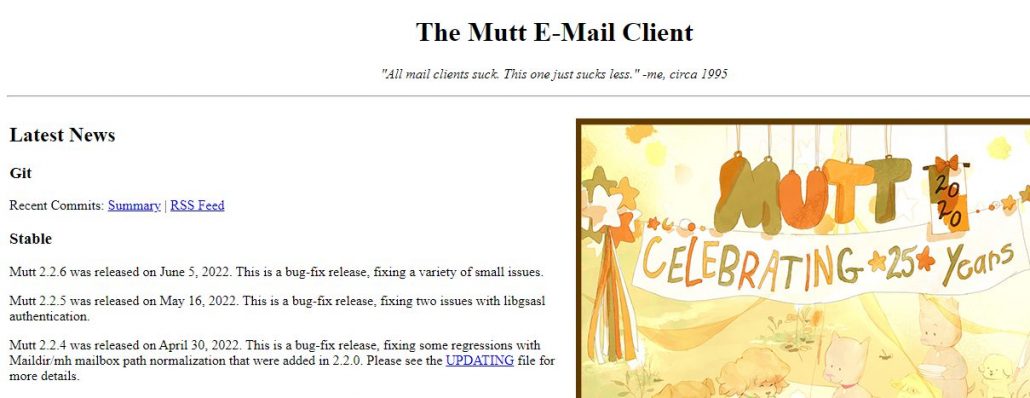
Mutt is a small but very powerful text-based mail client for Unix operating systems. It provides a command-line interface for sending, receiving, and managing email messages efficiently. Mutt is known for its simplicity, speed, and high configurability, making it a popular choice for users who prefer a text-based email client. The current stable public release version is 2.2.10.
Mutt also supports various external tools and scripts, allowing for seamless integration with other applications and services. For example, users can incorporate PGP encryption tools for secure communication or utilize external programs for composing or processing emails.
Mutt Features.
- various features to support mailing lists, including list-reply
- active development community
- full control of message headers when composing
- support for multiple mailbox formats (mbox, MMDF, MH, Maildir)
- highly customizable, including keybindings and macros
- change configuration automatically based on recipients, current folder, etc…
10. Alpine MTA

Alpine is a free software email client designed for Linux servers. It is highly customizable and supports Unicode and other features. The text user interface (TUI) allows users to easily adapt to the working of fast and easy-to-use mail transfer agents.
It comprises a rich set of shortcut keys for all navigation and operations. Also, Alpine supports various protocols, like IMAP, SMTP, NNTP, POP, and LDAP protocols. Unlike other Mail transfer agents, Alpine allows administrators to make changes to most configuration options.
11. Docker Mail server
Docker containers are popular for quickly deploying enterprise applications then why not mail servers? A Project called Docker Mailserver is a production-ready full-stack but simple mail server (SMTP, IMAP, LDAP, Antispam, Antivirus, etc.). Only configuration files, no SQL database. Keep it simple and versioned. Easy to deploy and upgrade.
12. Mail Enable MTA

The installation of MailEnable server doesn’t require any command and is very simple to install. MailEnable is an AJAX-based webmail client. Its features include personal calendaring, contacts, tasks, folders, auto signature, multilingual capabilities, and much more.
MailEnable Mail Transfer Agent (MTA) comes in two editions premium and Standard Editions. The standard one is free to use the mail server. It provides robust SMTP, IMAP, POP3, and Webmail services for Microsoft Windows servers
13. Dwarf mail server

Dwarf Mail Server is another Java-based platform Mail server that featured SMTP, POP3, and IMAP4rev1 protocols. It can handle virtual domains for the SMTP/POP3/IMAP4 protocols and also provide rich app application message processing via pluggable Mail filters and agents.
Dwarf Mail Server Features
- Handle multiple virtual domains.
- Application-independent authentication and authorization.
- MS Windows, UNIX/Linux/BSD, MacOS X, and other servers support.
- Virtual mail hosts in SMTP/POP3/IMAP4 server.
- ESMTP, POP3, and IMAP4rev1 implementation
14. Cuttlefish Mail Transfer Agent

It’s still early days for Cuttlefish and even now it already does a chunk of the most important things the proprietary services do. Cuttlefish offers basic bounce email handling, ensuring you maintain your good mail reputation by not resending to bounced addresses.
Cuttlefish also gives you insight into how people read and respond to your emails via automatic open-and-click tracking. It doesn’t handle incoming emails, it can’t detect when a user marks one of your emails as spam; It doesn’t have built-in support for email templates.
15. Hmail server

hMailServer is a free, open-source, e-mail server. It is developed for Microsoft Windows servers and popular free Mail servers that provide. It can work with any kind of webmail client system those supports IMAP and SMTP.
The Installation of hMailServer is easy and it is GUI-based rather than configuring the text files of a server. It provides a web-based frontend and supports all common email protocols- IMAP, SMTP, and POP3.
16. Zentyal Mail Transfer Agent
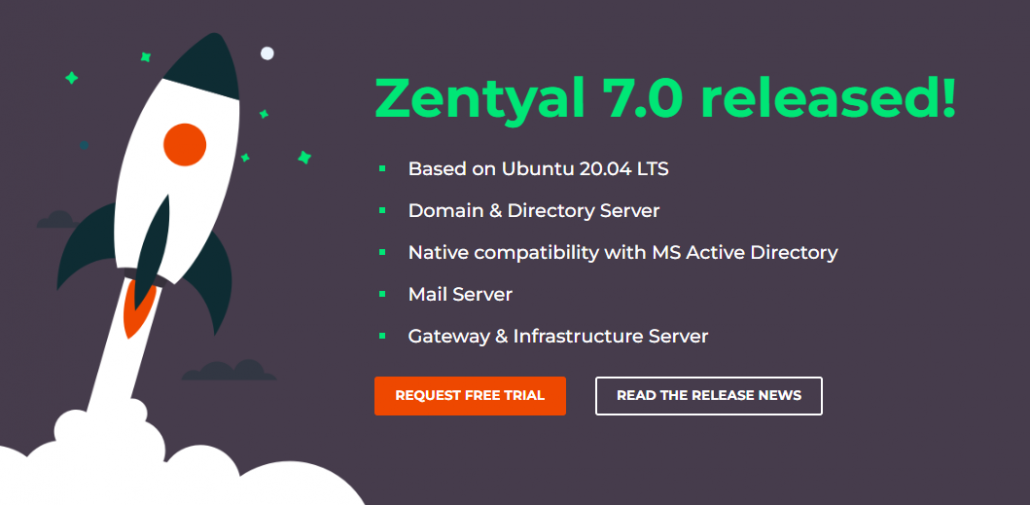
It is designed to meet the needs of small and medium businesses. Zentyal Server integrated Directory & Domain Server with native compatibility with Microsoft Active Directory, Mail Server with ActiveSync and webmail, Gateway with firewall and proxy, Infrastructure Server with DNS/DHCP server, Certification Authority, and Virtual Private Networks.
Zentyal Server is not only a mail server but more than that, it is a full package of network management. It comes in two versions commercial and community
17. Courier MTA

This free Mail server is also meant for POSIX-based operating systems based on Linux, and BSD-derived kernels. It can provide mail services for regular operating system accounts. The mail filtering engine, the webmail server, and the IMAP server are also available.
The Courier mail transfer agent (MTA) opensource mail server is an integrated mail/groupware server. It is based on protocols such as ESMTP, IMAP, POP3, LDAP, SSL, and HTTP.
Conclusion
There are several other MTAs out there so we try to list out every possible and useful one; since all have some strengths and limitations as we have reviewed if you have any questions or doubts? Do ask for help in the comment section.





Leave a Reply
Want to join the discussion?Feel free to contribute!